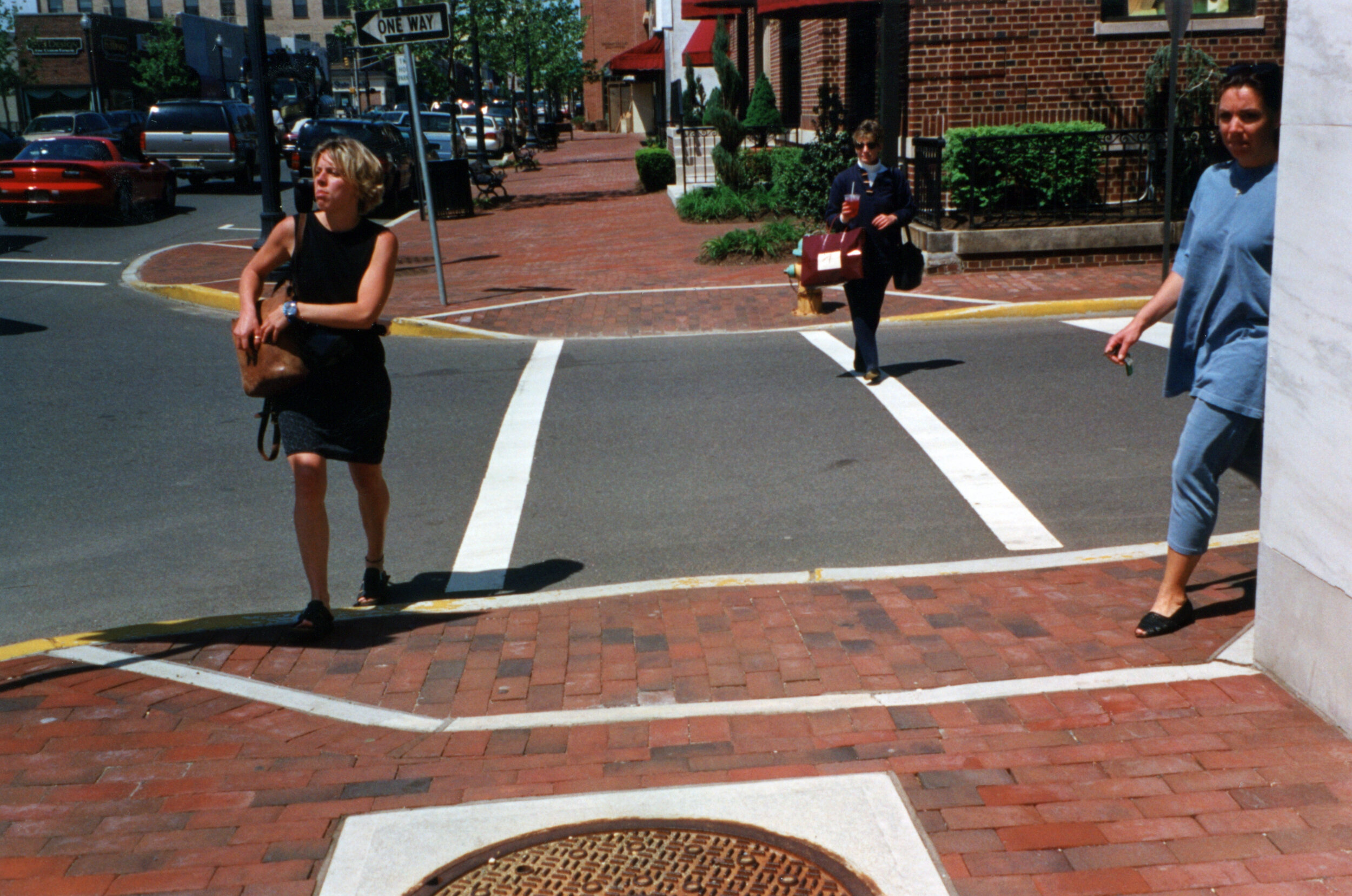A short history of the DL-23
The DL-23 is a design vehicle. Design vehicles represent the typical vehicle expected or desired on the road. They are used by street designers to calculate the size of streets and intersections. Most critically, they often determine the size of the corner, which has a direct effect vehicle turning speed and hence safety.
—Michael King
Sometimes in the history of moving the needle, you actually get to the next groove. The DL-23 is one example of that. It only took two decades, but we have succeeded in introducing a new design vehicle to the street design lexicon. Here is how it happened.
In the mid-1990s while toiling away in the NYC DOT trenches, my colleagues and I often wondered why the smallest truck in the AASHTO Green Book line up was a 30-foot long box truck, known in the industry as a Single Unit Truck (SU-30). We saw United States Post Office (USPS), United Parcel Service (UPS), and Federal Express (FedEx) trucks much more frequently. The SU-30 has an inside turning radius of 28 feet, which was causing designers to propose intersection with 30-foot radius corners. Most corners in New York City have a radius of 10 to 15 feet, so you can see how this might appear excessive.
Intersection with larger corners, Jacksonville FL
Intersection with small corners, Red Bank NJ
Working with Reid Ewing on Flexible Design of New Jersey’s Main Streets in the early-2000’s, we found that “whatever the theoretical case for large radii, cities make do with small ones, and crashes between turning vehicles and side street traffic appear to be rare, perhaps because turns are made so cautiously under constrained conditions.” Instead of relying on design vehicles, we recommended effective corner radii of “…15 feet at minor cross streets, 25 feet at major streets.”
In 2002 Jackson Wandres and I wrote the Traffic Calming chapter for NJ DOT’s Roadway Design Manual. In it we included a DL vehicle based on the “delivery truck commonly found on residential and commercial roadways” and labeled it the default design vehicle for traffic calming applications. We included a diagram illustrating how a curb extension could have a 10-foot radius if one used the DL design vehicle. Unfortunately, this chapter was only issued as a Draft.
A decade later Janet Attarian, Rick Chellman, Luann Hamilton, Gabe Klein, Paul Lippens, Michael Moule, Chris Wuellner and I succeeding in introducing the delivery van design vehicle in Complete Streets Chicago. Coined the DL-23, it is based on the “mail or package truck commonly used in Chicago.” The dimensions were taken from a UPS P-80 truck and the turning radii was calculated using AutoTurn by Chellman. The inside turning radius is 23 feet, five feet less than the SU-30.
In 2013 we (me, Linda Bailey, Chellman, Moule, Janette Sadik-Khan, David Vega-Barachowitz, Stephanie Wright) placed the DL-23 in the NACTO Urban Street Design Guide, which gave it national prominence.
Now it can be found in Transoft’s AutoTurn, the industry standard!! Here’s hoping it finds its way into the next version of the AASHTO Green Book.
Comparing design vehicles: 30-foot truck (SU), delivery van (D), passenger car (P)
DL-23 in Complete Streets Chicago
DL-23 in NACTO USDG
If you worked on getting the delivery van accepted as a design vehicle somewhere, please let me know so I can amend this post.





